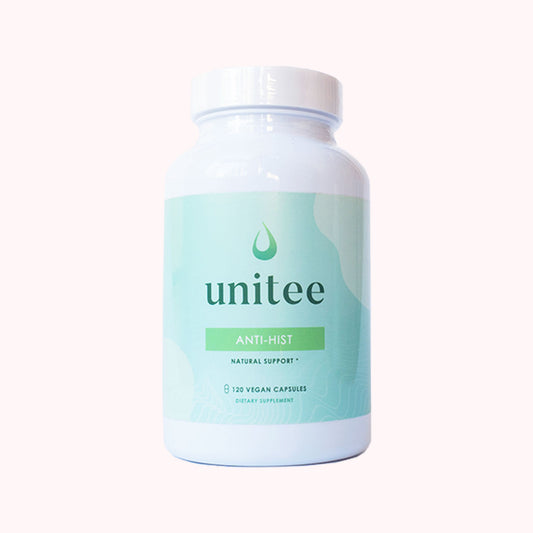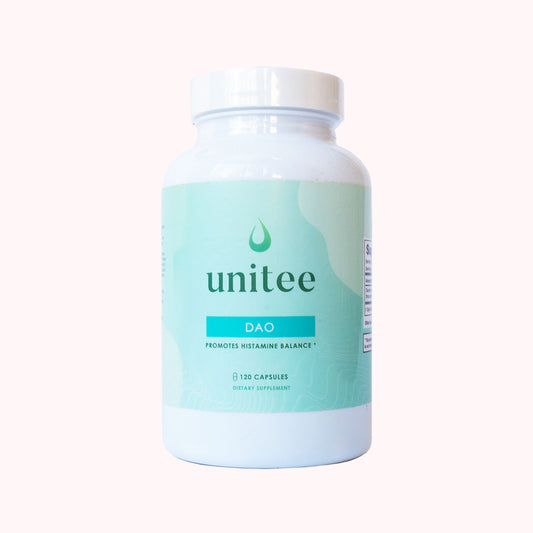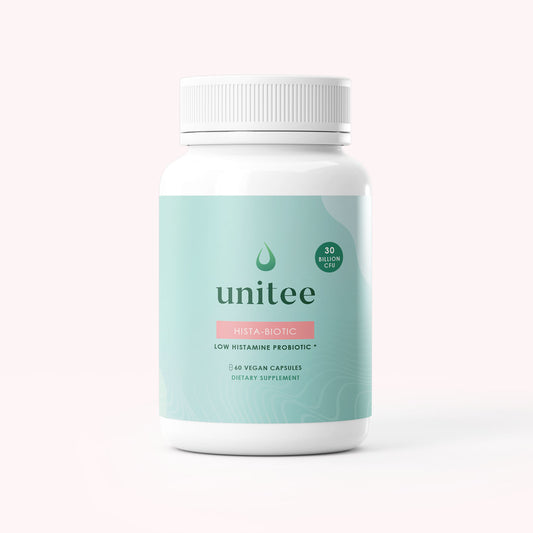If you suffer from celiac disease or gluten intolerance, you’ve probably been through a lot with your digestion.
When you finally found out that you had celiac disease or a gluten sensitivity, you may have felt relieved, knowing that things would get better once you stopped eating gluten.
If, however, you don’t feel like you’ve got it under control despite trying to follow a strict gluten-free diet, there might be something else going on.
Believe it or not, recent research has exposed a likely cause: histamine intolerance (1).
That’s right! All of your other food sensitivities, over and above gluten, might be because you’re still eating foods that contain or liberate histamine in your gut. It’s time to look at why histamine could be the reason you're having to deal with a bunch of new and frustrating symptoms that you can’t seem to get a handle on….
How is Histamine Intolerance Linked to Celiac Disease and Gluten Intolerance?
If you’ve been investigating histamine intolerance as a cause of your unruly symptoms, you probably know that there is a connection between gluten intolerance and histamine intolerance.
Gluten is highly inflammatory, especially when you’re already dealing with an inflammatory digestive disorder - of course, with this one specifically pertaining to gluten.
Now, there are a range of other foods to consider, too. We’ve mentioned histamine-containing and liberating foods, but what exactly does that mean?
Well, histamine can be found in all sorts of foods, and it’s part of a larger group known as biogenic amines.
Biogenic amines tend to increase in foods as they ferment or degrade, so all of those foods you may be eating to improve your gut health and boost the range of bacteria in your digestive tract, could actually be causing more harm than good.
Think sauerkraut, kimchi, kombucha and kefir… have you tried any of these and felt just awful afterwards? Now you know why!
Biogenic amines are also going to be found in other foods as they degrade. Meat is particularly susceptible to them, especially beef as it’s usually aged, and fish, as it goes bad really quickly, as is anything that is left over and not refrigerated or frozen after cooking.
That's not to be confused that meat is high in histamine itself - but to emphasize why fresh meat can be very well tolerated, whereas eating the same meal as leftovers may provoke a reaction.
Many fruits, vegetables and other plant-based foods will also either contain or cause your body to make more histamine.
Things like avocado, spinach, strawberries and tomatoes are all on the list. All good quality foods we add to our diet when we’re trying to be healthy, but they’re really troublesome for your unique situation. You can download a free list of foods to eat and avoid by clicking below:
The other problem we need to look at is with an enzyme called diamine oxidase or "DAO" for short.
We’ve seen from the research that DAO is often not produced in the right amounts in those with gut disorders, and that it could spell problems with those of you who have celiac disease (2,3).
Why is DAO so important in the connection between gluten issues and histamine intolerance? Because it is the key enzyme that helps to break histamine down in the gut!
You see where we’re getting at here: eating histamine-containing foods without enough DAO to break it down and you guessed it, your histamine levels rise and so do your levels of unbearable, seemingly unrelated symptoms.
If you would like to understand the DAO histamine connection deeper or are unfamiliar with it, you can read my article on DAO and histamine intolerance.
Now for the good part: what to do about it!
How to Know if Histamine is a Problem for You
There is certainly a quick and relatively easy way to determine if histamine is indeed an issue for you alongside your symptoms of celiac disease or gluten intolerance: Follow a low histamine diet for 2 weeks.
You can click below to get my free low histamine diet guide, including a full list of foods to eat and avoid. The great thing is it can be done from home and you can understand your results quickly. Simply try to remove as much histamine from your diet as possible for 2 weeks and see if your symptoms improve.
By reducing your histamine levels, you’re likely going to see not only an improvement in your gut symptoms, but in your itching, headaches, pain and fatigue.
What happens if your symptoms do get significantly better? Well, it means that you’re likely dealing with a histamine issue.
What to do if You Have Both Histamine and Gluten Intolerances
If you believe that alongside your gluten intolerance or celiac disease, histamine is also an issue, there's a few things you can do to take action.
1) First off, continuing on the low histamine diet is going to be your friend while you focus on improving the underlying issue.
2) Second, the addition of helpful supplements that may support your body and allow you to better cope with the processes needed to manage histamine levels.
Specifically, as we have discussed throughout this article, adding a DAO supplement may be beneficial as it has the potential to address both histamine and gluten issues from a root cause perspective.
3) If you're new to the world of histamine intolerance, we have plenty of resources that can help you to both understand and improve the condition by reading through our blog and recipe archives to better educate yourself.
Additionally, you can click below to get our free low histamine diet guide, which will teach you exactly how to approach the disorder from eating to healing.
References:
- Schnedl WJ, Mangge H, Schenk M, Enko D. Non-responsive celiac disease may coincide with additional food intolerance/malabsorption, including histamine intolerance. Med Hypotheses. 2021 Jan;146:110404.
- D’Agostino, L. et al. (1987) ‘Postheparin plasma diamine oxidase increases in patients with coeliac disease during gluten free diet.’, Gut, 28(Suppl), pp. 131–134. doi:10.1136/gut.28.suppl.131.
- Griauzdaitė, K. et al. (2020) ‘Associations between migraine, celiac disease, non-celiac gluten sensitivity and activity of diamine oxidase’, Medical Hypotheses, 142, p. 109738. doi:10.1016/j.mehy.2020.109738.

Anita Tee
My name is Anita Tee. I'm a nutritional scientist who specializes in histamine intolerance. I hold a Master of Science in Personalized Nutrition and a Bachelor of Science in Human Biology and Psychology.For the past ten years, I have used my experience in nutritional and medical health sciences to create a scientifically backed, natural approach to healthcare that relies 100% on evidence-based research.As I previously suffered from - and overcame - histamine intolerance, my focus is to increase recognition and expand the available resources and protocols available for resolving this particular disorder. To date, I have helped over 4,000 individuals fully resolve or better manage their histamine intolerance symptoms.







